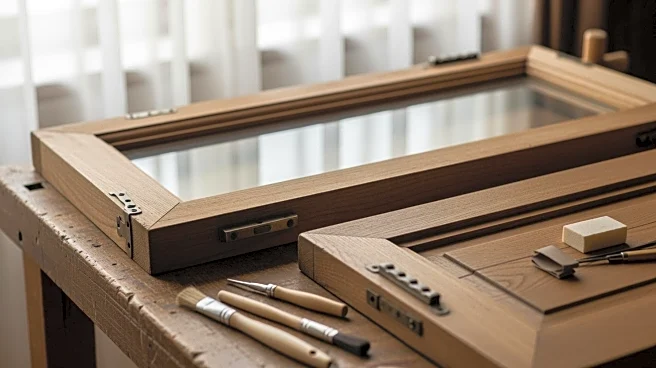What's Happening?
A recent study has introduced the Cell-Chain-Form (CCF) framework, which aims to accurately reflect elements, spatial structures, and logical relationships in traditional architectural components, specifically
doors and windows. The framework provides a systematic paradigm for decoding the genetic structure of these components, which are assembled from basic units such as door leaves and window lattices. These units, referred to as 'gene cells,' are combined through strict topological connection rules known as 'chains.' The study highlights the importance of understanding the cultural semantics and compositional logic behind these architectural elements, which often feature motifs symbolizing social values and identity. The research focuses on Zhangguying Village in Hunan Province, China, as a case study, due to its well-preserved ancient Han residential architecture.
Why It's Important?
The CCF framework offers a significant advancement in the preservation and restoration of traditional architectural elements, which are often damaged and lack systematic technical guidelines for restoration. By providing a detailed graphical representation of the elements, patterns, and forms of doors and windows, the framework facilitates better preservation and transmission of cultural heritage. This approach not only aids in restoring damaged components but also ensures that the cultural connotations and values embedded in these architectural elements are maintained. The study's focus on Zhangguying Village provides a critical case for analyzing universal principles underlying local particularities, offering a methodology that is both universal and transferable.
What's Next?
The study outlines a restoration workflow that utilizes the CCF framework to guide the restoration of damaged traditional doors and windows. This involves determining the basic form of the door or window, analyzing the 'chain' pattern structure, and selecting regionally appropriate cell elements from the CCF graphical database. The restoration process aims to closely replicate the original appearance while maintaining consistency and avoiding conflicts in the overall result. The methodology is expected to be applicable to other traditional architectural sites, providing a systematic approach to cultural heritage preservation.
Beyond the Headlines
The CCF framework not only addresses the technical aspects of restoration but also emphasizes the cultural significance of traditional architectural elements. By decoding the genetic structure of these components, the framework highlights the importance of cultural semantics and compositional logic, which are often overlooked in conventional restoration methods. This approach fosters a deeper understanding of the cultural identity and social values embedded in traditional architecture, contributing to the broader discourse on cultural heritage preservation.












